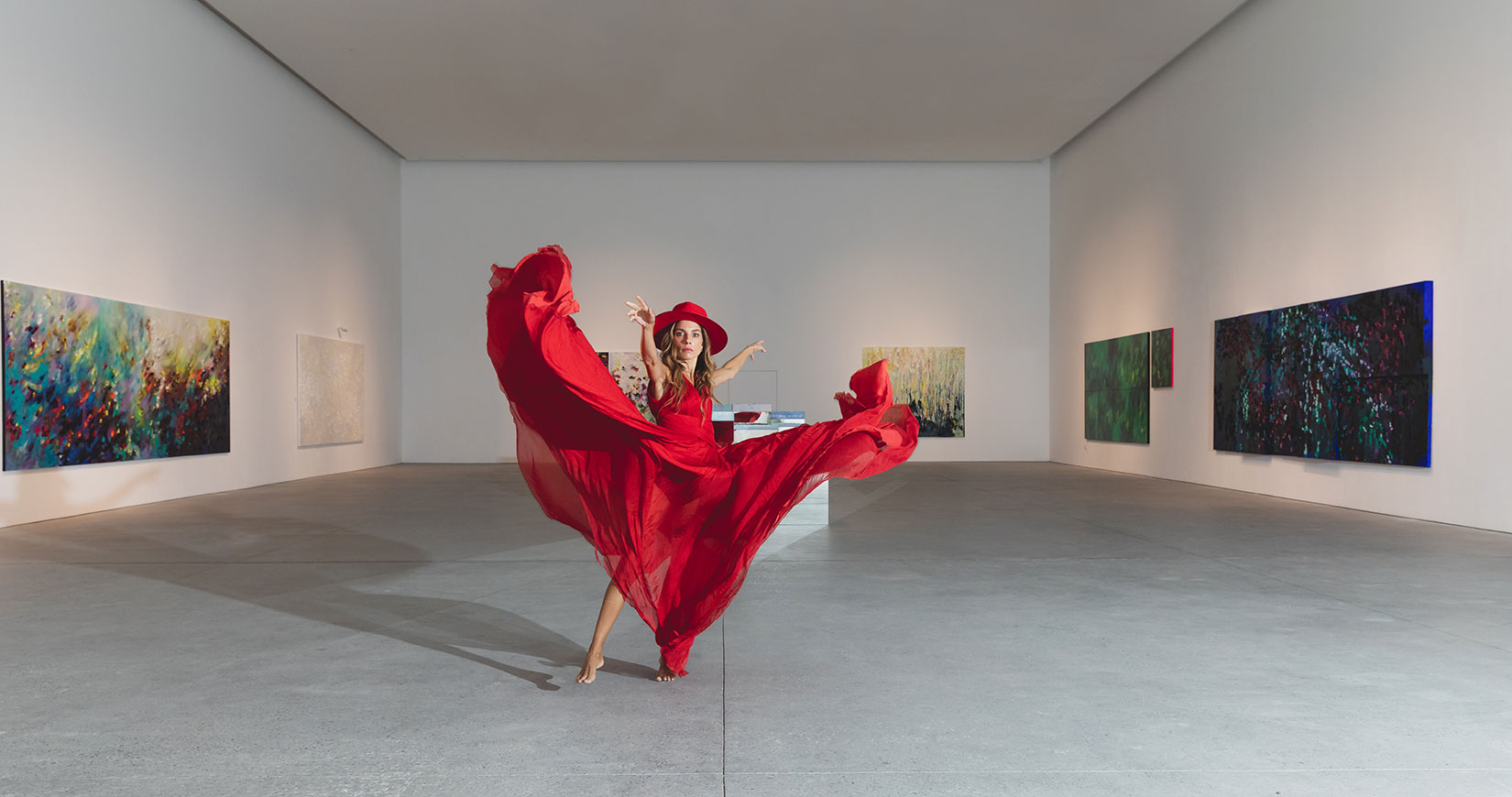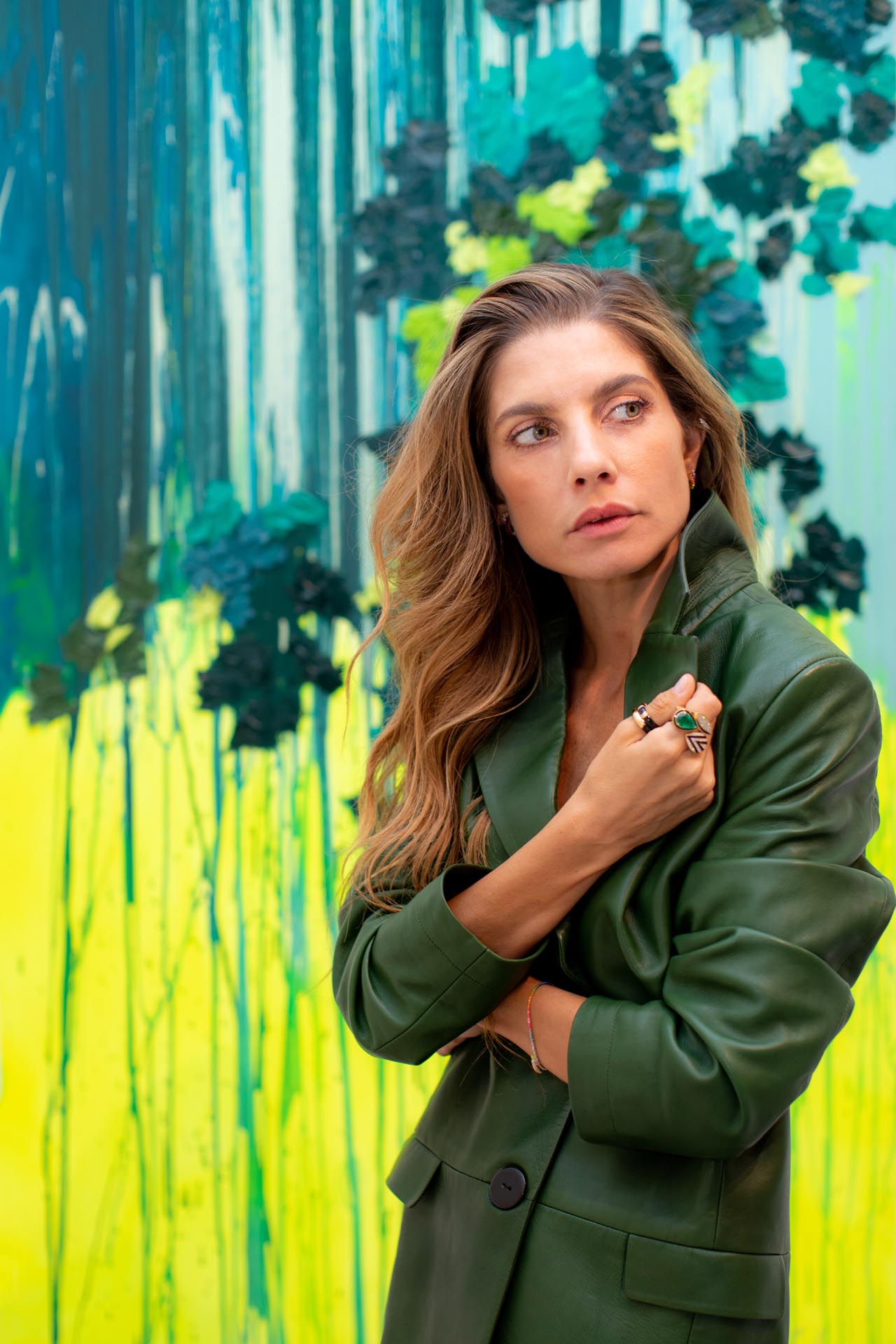Copyright © 2025 Motivate Media Group. All rights reserved.
Ana D’ Castro’s first solo show at Leila Heller Gallery is an enchanted garden of colour
The Portuguese artist-cum-architect's exhibition showcases her relationship with colour and space

“From my father’s side, my grandfather was an artist and from my mother’s side, the family business [was in the manufacturing of] industrial paints. [So, from] an early age my fascination with paints, pigments and synthetic components was always there,” begins Ana D’Castro, whose first exhibition, ‘The Enchanted Garden’, is currently on show at the Leila Heller Gallery in Dubai’s Alserkal Avenue.
“I have always loved colour, and I remember since an early age being fascinated with the vibrancy of each gradient and how you mix them to create other colours. It’s a very precise method where you sit in a laboratory and measure with great precision how many milligrams of each dye can be mixed to create a determinate tone,” she explains.

‘Enchanted Garden’ is composed of a series of abstract paintings in which colour is the protagonist and acts as a tool for expressing emotion using a juxtaposition of different pigments and layers; some lying flat, while others – thick flickers of paint like flower petals – seem to be almost ready to escape the canvas.
The artworks also offer a glimpse into how light interacts with colour and the surrounding environment during different times of the day through the artist’s layered approach. Initially, we see the first layer – the faded horizon where colours bleed into one another – and then the second, where richer patches of oil paint create a more heavily textured and tri-dimensional effect. The ‘petal’ effects, lastly, flow across the canvas as if flying in an invisible wind. All in all, D’Castro’s ‘Enchanted Garden’ is a study of colour in itself, where paintings present an explosion of chromatic emotion, composed into a series of either multi- or monochromatic canvases.

“Through my practice, my aim is to manipulate colour and the subtle variations of the same gradient, in order to create volume, depth and perspective within the canvas. While composing the movement of the piece, I carefully study how colour will add or subtract light and shadow into the ensemble. Colour plays a major role in my artworks, and I am constantly looking for the exact tone, the role it plays by allocating in a specific place, and how instantly this act either dilutes or enhances the volumetric composition,” the artist shares.
The exhibition itself is set up using a specific foundation concept created by the artist, where a modular system forms the base of all canvases, with the prime module being two metres by two metres. This module is then multiplied into triptychs and diptychs or subdivided into smaller modules of 1m x 1m and 0.5m x 0.5m, just like a structural metric grid that is fundamental to any architectural foundation.
Photography by Joachim Guay
The Latest
How Eywa’s design execution is both challenging and exceptional
Mihir Sanganee, Chief Strategy Officer and Co-Founder at Designsmith shares the journey behind shaping the interior fitout of this regenerative design project
Design Take: MEI by 4SPACE
Where heritage meets modern design.
The Choreographer of Letters
Taking place at the Bassam Freiha Art Foundation until 25 January 2026, this landmark exhibition features Nja Mahdaoui, one of the most influential figures in Arab modern art
A Home Away from Home
This home, designed by Blush International at the Atlantis The Royal Residences, perfectly balances practicality and beauty
Design Take: China Tang Dubai
Heritage aesthetics redefined through scale, texture, and vision.
Dubai Design Week: A Retrospective
The identity team were actively involved in Dubai Design Week and Downtown Design, capturing collaborations and taking part in key dialogues with the industry. Here’s an overview.
Highlights of Cairo Design Week 2025
Art, architecture, and culture shaped up this year's Cairo Design Week.
A Modern Haven
Sophie Paterson Interiors brings a refined, contemporary sensibility to a family home in Oman, blending soft luxury with subtle nods to local heritage
Past Reveals Future
Maison&Objet Paris returns from 15 to 19 January 2026 under the banner of excellence and savoir-faire
Sensory Design
Designed by Wangan Studio, this avant-garde space, dedicated to care, feels like a contemporary art gallery
Winner’s Panel with IF Hub
identity gathered for a conversation on 'The Art of Design - Curation and Storytelling'.
Building Spaces That Endure
identity hosted a panel in collaboration with GROHE.
















